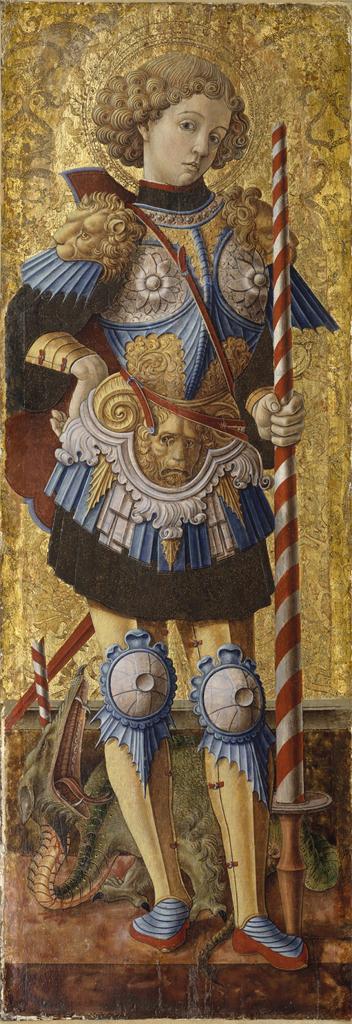On 23 April 303 Geṓrgios, the young Roman Legion officer (b. 280) and favored sentry of the Emperor Diocletian, was executed for refusing to recant his Christian beliefs. St. George’s faith and bravery became associated with other legendary accounts of courage from around the Mediterranean, resulting in the popular iconography historically associated with George, the mounted rider who slays the dragon.
Some evidence links the spear-carrying rider to Egyptian sources and New Kingdom stories of the god Horus fighting marauding crocodiles from the Nile. The establishment of George as a popular saint in Western Europe who captured the medieval imagination was codified by the official elevation of his feast to a festum duplex at a church council in 1416, on the date of his martyrdom, 23 April.
The allure of representing both a dragon and a pious and attractive youth was not lost on artists from the Italian Renaissance, who memorialized George in paint, sculpture, and altarpieces.
Reference: Pasquale Maria Morabito. “Saint George and the Dragon: Cult, Culture, and Foundation of the City.” Contagion: Journal of Violence, Mimesis, and Culture. Vol. 18 (2011), pp. 135-153.
Vittore Carpaccio, Saint George Baptizes the Selenites, c. 1507. Scuola di S. Giorgio degli Schiavoni, Venice.
Carlo Crivelli, Saint George, c. 1472. The Metropolitan Museum of Art, Nr. 3397.
Donatello, Saint George Tabernacle; Saint George Slaying the Dragon, c. 1414-17. Commissioned by the Arte dei Corazzai for north side of Or San Michele, Florence, the original was moved to the Bargello in 1892, replaced by a copy. Museo nazionale del Bargello, Florence.
Raphael, St. George and the Dragon, 1504. Musée du Louvre, Nr. 40-07-07/ 3.
Medallion fronts of Byzantine Icons inscribed with the name of St. George, late 11th / 12th Century. The Metropolitan Museum of Art.
Further Reading: Roger S. Bagnall. Egypt in the Byzantine World, 300-700. Cambridge: Cambridge University Press, 2007.
Wim Blockmans and P. C. M. Hoppenbrouwers. Introduction to Medieval Europe 300–1500. New York Taylor and Francis, 2014.






